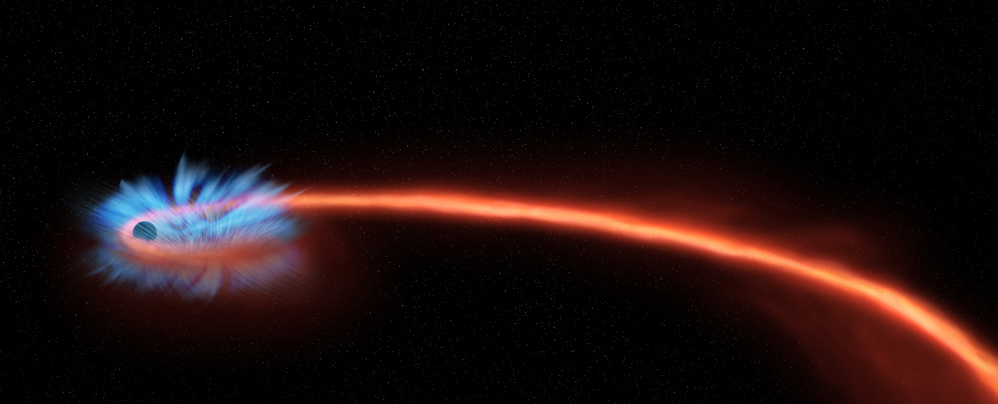A star has just been ripped apart by a black hole several million times the mass of our own sun.
The event, known as a tidal disruption, occurred in the center of the PGC 043234 galaxy, 290 million light-years from Earth.
It is the closest such event discovered in a decade and could shed new light on the celestial mysteries that are black holes, according to David Burrows, professor of astronomy and astrophysics at Penn State University.
Burrows and his team of astrophysicists at Penn State played a key role in the observation by controlling the Swift observatory, a satellite explorer mission used to collect data on the black hole’s activity.
Findings were reported in the Oct. 22 issue of the journal Nature.
Black holes, according to NASA, are areas of space where the gravity is so strong that not even light can escape them. Tidal disruptions occur when a black hole’s intense gravity produces tides that rip apart any star that ventures too close, reducing it to a cloud of stellar gas.
Some of that stellar debris is flung outward at high speeds, and the rest falls slowly toward the black hole, circling it in what is known as an accretion disk, sort of like the whirlpool that forms when you pull the plug on a tub full of water.
As the black hole slowly pulls that stellar gas toward its center, it heats it to millions of degrees, generating massive amount of X-ray light in the process. This light can be observed for several months or even years.
To identify such tidal disruptions, astronomers use telescopes designed to identify the bright flashes of gamma rays that may indicate the presence of celestial explosions. But although these gamma telescopes help astronomers pinpoint the approximate location of such phenomena, they can’t tell much about what’s happening there.
According to Burrows, this is because the stellar gases swirling around a black hole get hotter and hotter as they approach the center, producing different frequencies of light at different temperatures, before they’re swallowed up into darkness. So observing them through telescopes that are sensitive to only one kind of light can’t tell you much.
“It’s like the old story about the blind men and the elephant,” Burrows said, referring to the parable in which three blind men individually observe the tusks, trunk and skin of an elephant, unable to arrive at a complete picture of what the animal looks like.
“If you only look at the optical, you might learn things about gas that’s at temperatures of a few thousand degrees. But you learn nothing about gases at the temperatures of a few million degrees.”
That’s where Swift comes in. The satellite explorer mission, managed by NASA’s Goddard Space Flight Center in Greenbelt, Md., has on board not one, but three state-of-the-art telescopes, each trained to capture a different kind of light.
First, its gamma telescope looks for bright flashes of gamma rays that often indicate the presence of a tidal disruption. Once a likely target has been identified, Swift’s UV telescope is trained on the location to capture light that is emitted near the periphery of a black hole, when stellar gas reaches temperatures of 10,000 to 20,000 degrees. Its X-ray telescope captures light produced closer to the center, when the same gas reaches several million degrees.
Copy the Story LinkSend questions/comments to the editors.



Success. Please wait for the page to reload. If the page does not reload within 5 seconds, please refresh the page.
Enter your email and password to access comments.
Hi, to comment on stories you must . This profile is in addition to your subscription and website login.
Already have a commenting profile? .
Invalid username/password.
Please check your email to confirm and complete your registration.
Only subscribers are eligible to post comments. Please subscribe or login first for digital access. Here’s why.
Use the form below to reset your password. When you've submitted your account email, we will send an email with a reset code.